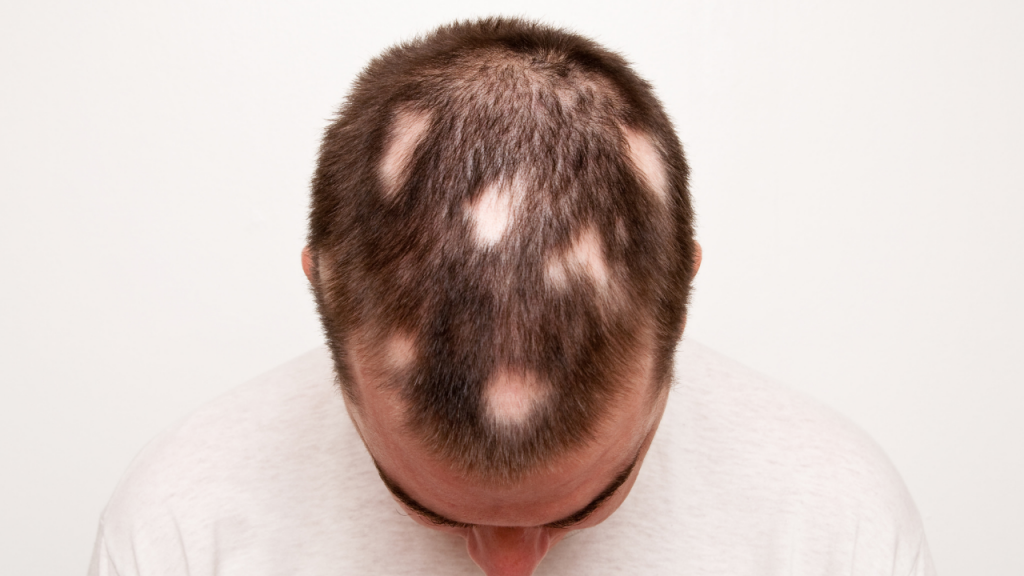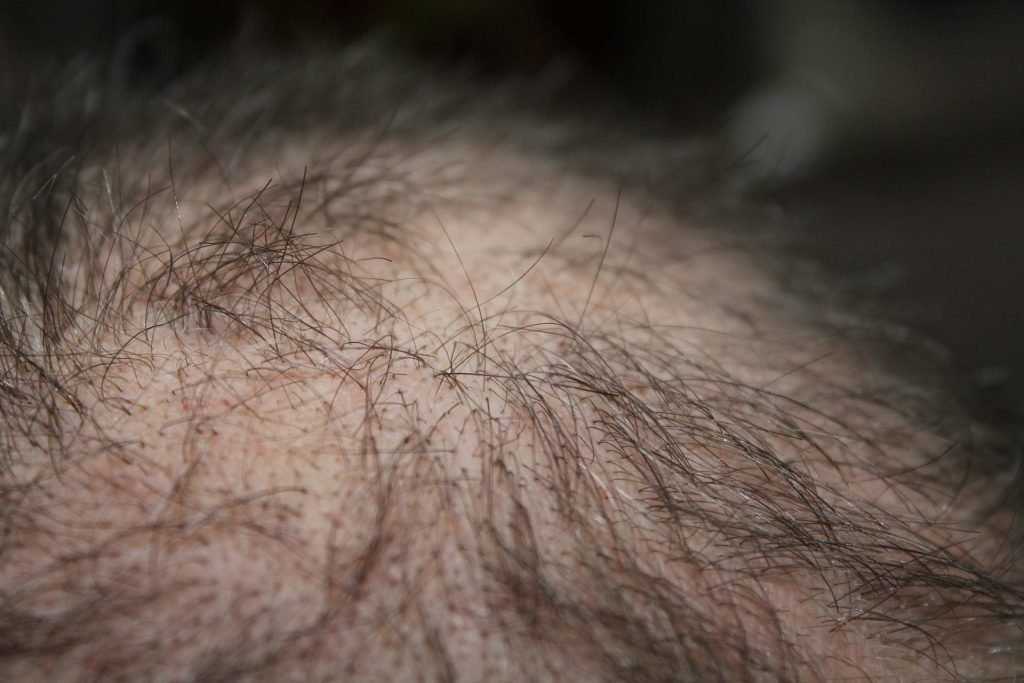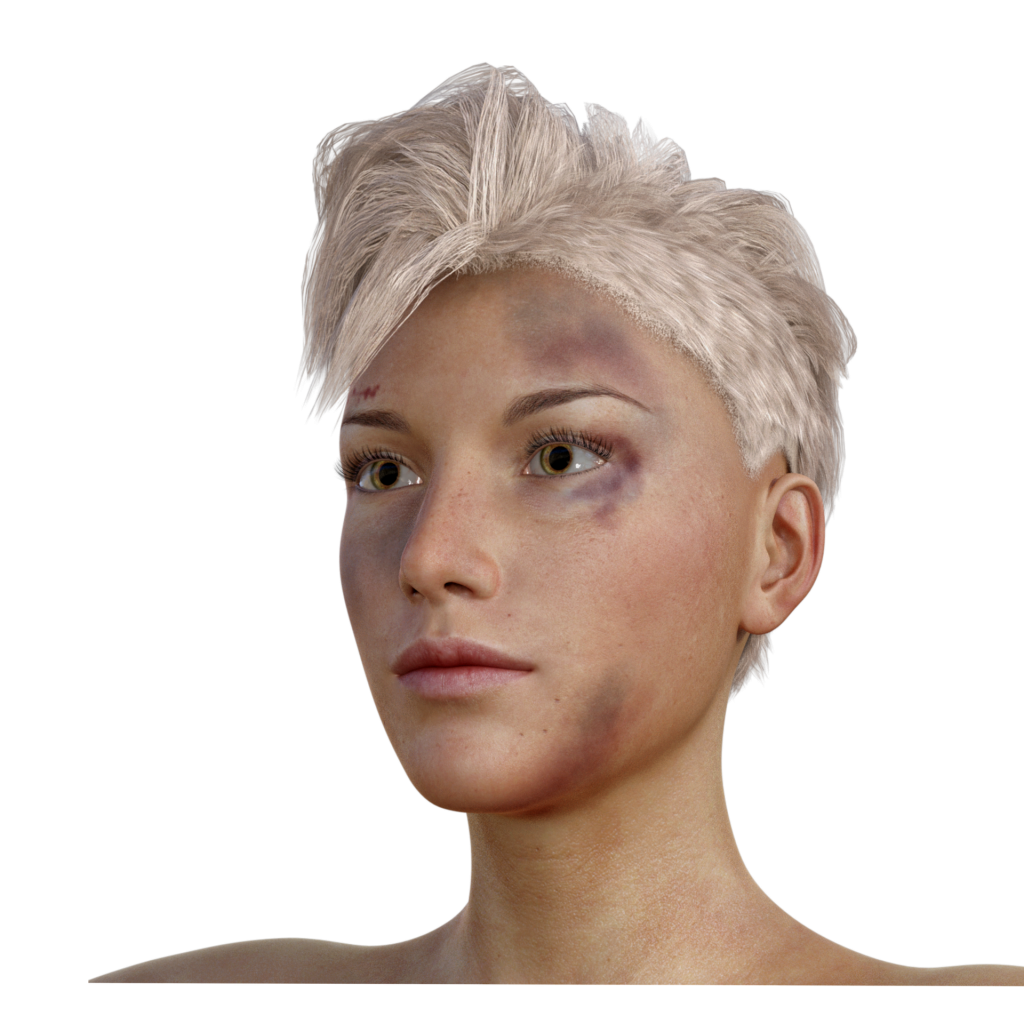
Almost everyone panics when he notices a large amount of hair on the comb or hairbrush. But instead of panicking one should immediately go to see a dermatologist. Maybe it is the beginning of hair loss and an indication that there is something that has affected the natural growth of your hair. The following information gives you a general idea about whether your hair is growing naturally or unnaturally.
It has been scientifically noticed that about 90% of hair grows continuously and the duration of this growth may range from two to six years, while the remaining 10% rests for a period of two to three months and then starts falling off after the end of the resting period.
Hair growth and loss are some of the cycles that characterize human life. In natural situations, when hair falls, a new one begins to appear from the follicles. Normally, hair grows at a rate of 10 to15 millimeters per month. Yet, the older you get, the slower the pace of hair growth becomes.
So hair loss is the result of a normal hair growth cycle. But in abnormal situations, one may start losing hair at an early age, and this may be due to a lot of causes. In the coming paragraphs, we will be talking about these causes and possible treatments for hair loss.
Hair loss can be the result of a large number of causes. Listed below are some of these causes.
To take care of their hair, lots of men and women use manufactured products that contain chemical substances which can have destructive effects not only on their hair but skin as well. Such products include:
If these products are used according to the doctor’s recommendations, they will have no or little negative impact on your hair. But if you don’t follow the doctor’s advice, your hair may break down or, in best cases, get weakened.
If the use of these preparations weakens and breaks your hair, it is advisable to stop using them until it is regenerated, and the damaged hairs disappear
This phenomenon is scientifically referred to as Androgenetic Alopecia /Calvities. It is the most common cause of hair loss since it is genetically transmitted from the mother or father. It normally begins when one reaches his twenties, thirties, or even forties. Women who experience this phenomenon usually have very little hair, but they never get bald.
The causes of Alopecia Areata are still unknown. But it is widely believed that is linked to problems in the immune system. The symptoms of this disease emerge in the form of small, round bald areas with a diameter equivalent to the diameter of a coin or slightly larger. They can occur in childhood, adulthood, or at any age, and the people who get impacted by them are generally in good health conditions.

Although macular alopecia is a very rare phenomenon, it can lead to the complete loss of all head and body hair. In most cases, hair re-grows. Still, you should consult a dermatologist to get the appropriate medications to accelerate this growth.
Diseases, stress, and other factors push a large amount of hair to enter the so-called terminal phase. It is the phase of rest. i.e., a decrease in the effectiveness of capillary follicle cells as part of the normal cycle of hair growth. This itself can lead to hair loss at a high and accelerated pace. This type of hair loss often stops automatically after a few months.
Factors that cause chronic hair loss include:
What causes tinea capitis is a fungal infection. It is characterized by the appearance of spots covered with crust on the scalp. These spots grow, expand, and cause hair breakage, redness of the skin, and puffiness. Sometimes, they cause even fluid secretion from the scalp.
This disease is very contagious and is very common in children. It can be treated with medications.

This disease is characterized by the patient twisting, bending, tightening, and uprooting the hair of the head, be it the hair of the head, eyebrows, or eyelashes.
In some cases, this phenomenon is only a bad habit. But it disappears after obtaining professional advice and an explanation of the damage and side effects that plucking the hair can cause. But in other cases, the phenomenon of plucking hair may be an emotional reaction to stress or psychological pressure. Sometimes, it may be a serious and severe psychological disorder.
Cicatricial alopecia is one of the very rare phenomena that causes the appearance of bald patches accompanied by itching and pain. Also, it causes inflammation around the hair follicles that can damage them and lead to the appearance of scars and hair loss instead of growth.
We do not yet know the factors that cause cicatricial alopecia. But we can treat the disease by stopping the infection from spreading to other parts and places of the scalp.
In all types of surgeries, there are always certain risks that may be part of this process. But the post-treatment complications for hair restoration are very rare. When performing hair restoration, the person undergoing treatment should expect the following:
The possibility for a patient to return to his daily activities, but he should refrain from doing great physical effort or sports activities until the doctor allows him to do so.

The appearance of mild side effects which can include:
A correct diagnosis can help the majority of those who suffer from hair loss; in the sense that the dermatologist can examine the patient and diagnose the cause of hair loss and baldness. Then he can know if this phenomenon will disappear on its own or whether there is a need to give the patient medications.
The type of operation to be performed to restore hair depends on the form and spread of baldness. A dermatologist can recommend one of the types of surgeries detailed below in order to obtain the best possible result. Hair loss treatments vary, and the most important of which are:
Doctors and surgeons specializing in dermatology perform several types of surgeries that aim at restoring hair and the places from which it has fallen, in addition to giving the hair as natural a look as possible.
The people who are more likely to undergo these types of surgeries are those whose baldness is so visible, those who have very little hair, and those whose hair falls as a result of burns or scalp infection.
Hair transplantation is based on the prevailing donation principle, i.e. taking hair from a healthy place and transplanting it during surgery in the infected area in order to grow again. The hair transplantation requires the following things:
We can do this by taking a sample from the back and sides of the scalp. These places are often referred to as donation areas since they contain hair that continues to grow for life.
It is a process that usually results in the appearance of a small scar covered by the surrounding hair.
The furrows contain hair. The practitioner cuts them from the donation area and divides them into groups of implants in order to implant in the bald spots prepared for this purpose. The area that can be covered by hair transplantation varies according to the size of the bald spot and the method of transplantation followed.

About a month after the operation, the biggest part of the transplanted hair falls out. Two months later, new hair begins to grow and then continues to grow at a normal pace. After six months, the transplanted hair acquires a new shape and looks similar to those of natural hair.
Reducing the skin of the scalp is a solution for those who suffer from a wide area of baldness. This treatment is an operation during which the bald spots are narrowed. In some cases, these spots are completely concealed by removing a few centimeters of the hair-free skin. Then the two ends of the pieces are pulled towards each other and connected by sewing.
The scalp reduction procedure can be performed alone or combined with another hair transplant operation.
Leave a comment